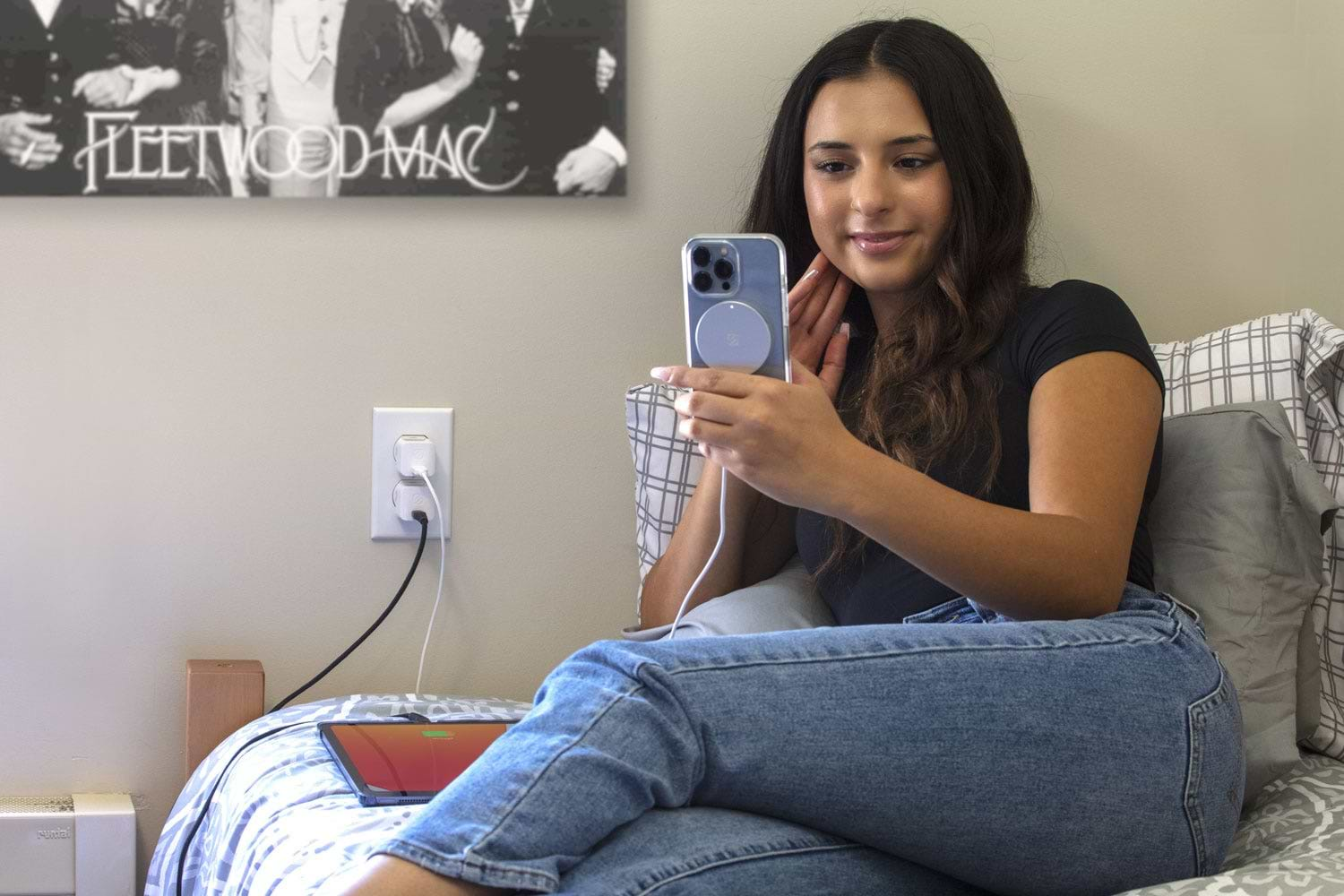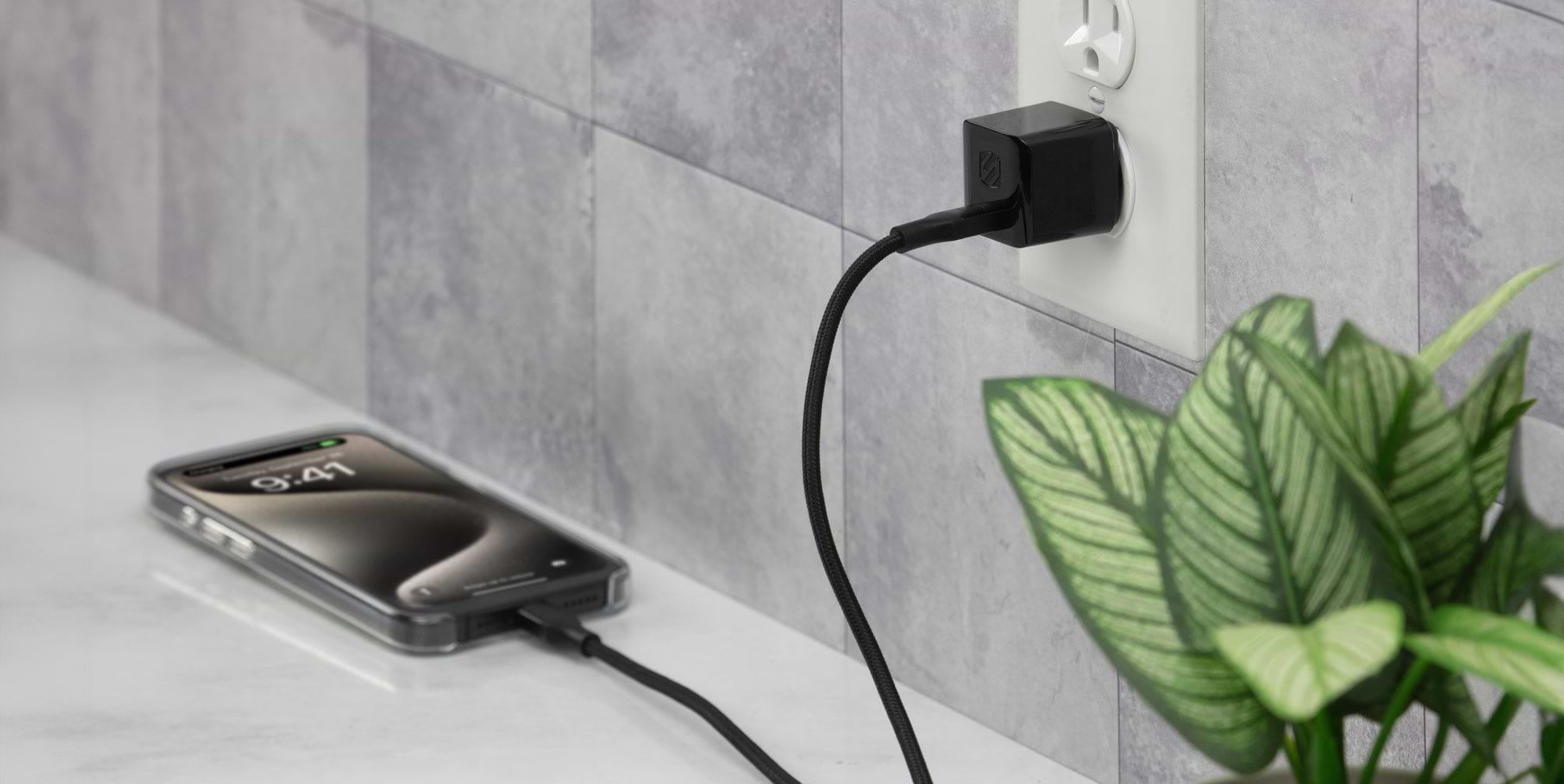Slow Phone Charging & Rapid Discharge: Solutions

In today's digital age, our smartphones have become an indispensable part of our lives. From staying connected with loved ones to managing our daily schedules, these devices play a pivotal role. However, a common frustration among smartphone users is slow phone charging and rapid discharge. Not only does this impede our productivity, but it also hampers our overall smartphone experience.
We’ll scrutinize the problem of slow charging and rapid discharge and explore effective solutions to tackle these issues.
Understanding the Problem of Slow Charging and Rapid Discharge
Before we delve into the solutions, it is essential to comprehend the underlying causes. Firstly, let's take a closer look at the science behind phone charging. When we plug our smartphones into a power source, the electrical energy flows to the battery, charging it. However, various factors can hinder this process, resulting in slow charging.
One of the primary factors that contribute to slow charging is the quality of the charging cable and adapter. Using a low-quality or damaged cable can impede the flow of electrical energy, leading to a slower charging process. Similarly, using an adapter with a lower power output than recommended for your device can also result in slower charging.
Another factor that affects charging speed is the temperature. Extreme temperatures, whether too hot or too cold, can negatively impact the battery's ability to charge efficiently. High temperatures can cause the battery to degrade faster, while low temperatures can slow down the chemical reactions necessary for charging.
The Science Behind Phone Charging
Smartphone batteries are designed to convert electrical energy into chemical energy, which is stored for later use. The charging process involves the transfer of electrons between different layers within the battery, leading to a chemical reaction that stores energy. However, this intricate process can be affected by several factors, which contribute to slow charging.
One of the factors that affect the charging process is the battery's internal resistance. As the battery ages, its internal resistance increases, making it more difficult for the electrical energy to flow through and charge the battery efficiently. This increased resistance can result in slower charging times.
Additionally, the charging circuitry within the smartphone plays a crucial role in the charging speed. If the charging circuitry is not optimized or if there are any faults in the circuitry, it can lead to slower charging. This is why it is essential to use chargers and cables that are compatible with your device, as they are designed to work optimally with the charging circuitry.
Why Does Rapid Battery Discharge Happen?
While slow charging is a frustrating issue, rapid discharge can be equally exasperating. We've all experienced situations where our phone's battery drains faster than expected. But what causes this rapid battery discharge?
One of the main culprits behind rapid battery discharge is the usage patterns and habits of the phone user. Activities such as playing graphics-intensive games, streaming videos, or using power-hungry apps can put a significant strain on the battery, causing it to drain quickly. Similarly, having multiple apps running in the background or using features like location services can also contribute to rapid battery discharge.
Battery health and age also play a role in rapid discharge. Over time, smartphone batteries lose their capacity to hold a charge, resulting in shorter battery life. If your phone's battery health has deteriorated significantly, it is more likely to discharge rapidly, even with minimal usage.
Furthermore, software-related issues can also contribute to rapid battery discharge. Bugs or glitches in the operating system or specific apps can cause excessive battery drain. Keeping your phone's software up to date and regularly closing unnecessary apps can help mitigate this issue.
Common Causes of Slow Phone Charging
Several factors can contribute to slow phone charging, and it is crucial to identify these issues to find effective solutions.
Faulty Chargers and Cables
One of the primary culprits behind slow charging is using faulty chargers and cables. Over time, chargers and cables can wear out or become damaged, leading to poor electrical connection between the power source and the battery. This can significantly slow down the charging process.
When a charger or cable is faulty, it may not deliver the required amount of power to charge the phone efficiently. This can result in a longer charging time, frustrating users who rely on their phones throughout the day. It is essential to regularly inspect chargers and cables for any signs of wear and tear, such as frayed wires or loose connections.
Furthermore, using third-party chargers and cables that are not certified by the phone manufacturer can also contribute to slow charging. These non-certified accessories may not meet the necessary standards and specifications required for optimal charging speed.


Software Issues
Software glitches or outdated operating systems can also contribute to slow phone charging. Outdated software may not optimize the charging process, leading to inefficiencies and longer charging times.
When the software on a phone is not up to date, it may not communicate effectively with the charging hardware, resulting in slower charging speeds. Additionally, certain apps running in the background can consume significant amounts of power, diverting resources from the charging process and prolonging the time it takes to reach a full charge.
Regularly updating the phone's software and closing unnecessary apps can help improve charging speed. It is also advisable to restart the phone occasionally to clear any temporary software issues that may be affecting the charging process.
Battery Health and Age
As smartphones age, their batteries naturally degrade. Over time, the battery's capacity diminishes, leading to slower charging. Additionally, factors such as temperature and usage patterns can also impact battery health and contribute to slow charging.
Exposing a phone to extreme temperatures, both hot and cold, can affect the battery's performance and overall health. High temperatures can cause the battery to degrade faster, while low temperatures can reduce its ability to hold a charge. Similarly, heavy usage patterns, such as frequent gaming or resource-intensive tasks, can put a strain on the battery and lead to slower charging.
To maintain optimal battery health and improve charging speed, it is recommended to avoid exposing the phone to extreme temperatures and to moderate resource-intensive activities. Additionally, some phones offer battery optimization features that can help prolong battery life and improve charging efficiency.
Common Causes of Rapid Battery Discharge
In addition to slow charging, rapid battery discharge is another frustrating issue that smartphone users often encounter. Let's explore some common causes of this rapid battery drain.
Screen Brightness and Power Consumption
One of the significant contributors to rapid battery discharge is high screen brightness. Keeping your screen brightness at maximum or even high levels can significantly drain your smartphone's battery. Additionally, certain power-intensive applications or features, such as GPS or video streaming, can also consume considerable battery power.
When the screen brightness is set to maximum, the backlight emits a higher level of light, which requires more power from the battery. This increased power consumption can lead to a rapid drain in battery life. It is recommended to adjust the screen brightness to a lower level to conserve battery power.
Furthermore, power-intensive applications like GPS or video streaming can put a significant strain on the battery. These applications require constant processing power and network connectivity, resulting in a faster depletion of battery life. It is advisable to use these power-intensive features sparingly or when necessary to preserve battery power.
Background Apps and Battery Drain
Many apps continue to run in the background even when we're not actively using them. These background apps consume additional power and drain the battery faster. Closing unnecessary apps can help mitigate this issue.
When we switch between apps or exit them, some applications may continue to run in the background, performing tasks like syncing data, receiving notifications, or updating content. These background processes require processing power and network connectivity, leading to increased battery consumption.
To prevent unnecessary battery drain, it is recommended to close or force-stop apps that are not in use. By doing so, you can conserve battery power and extend the overall battery life of your smartphone.
Poor Signal Strength and Battery Life
Another often overlooked factor is poor signal strength. When our smartphones struggle to maintain a strong cellular or Wi-Fi signal, it expends more power to establish and maintain a connection. This increased power consumption can lead to rapid battery drain.
When the signal strength is weak, the smartphone constantly searches for a stronger signal or attempts to reconnect to the network. This continuous search and connection establishment process requires additional power, resulting in a faster depletion of battery life.
To improve battery life in areas with poor signal strength, you can enable airplane mode or switch to a more reliable network connection. By doing so, your smartphone will consume less power in trying to establish and maintain a connection, ultimately preserving battery life.
Solutions for Slow Phone Charging
Now that we've identified the common causes of slow phone charging, let's explore some effective solutions to overcome this frustrating issue.
Choosing the Right Charger
Investing in high-quality chargers and cables can significantly improve your phone's charging efficiency. Look for chargers that provide adequate power output and cables that are durable and compatible with your device. Furthermore, consider using chargers from reputable manufacturers to ensure compatibility and safety.
Software Updates and Fixes
Regularly updating your smartphone's software and operating system can resolve software-related charging issues. These updates typically include optimizations and bug fixes that enhance charging efficiency.
Replacing the Battery
If your smartphone's battery is old or significantly degraded, replacing it with a new battery can be a viable solution. Consulting a professional technician or contacting the manufacturer's customer support can help you determine if a battery replacement is necessary.
Solutions for Rapid Battery Discharge
To combat the troublesome issue of rapid battery discharge, let's explore some effective solutions.
Screen Brightness Optimization
Adjusting your screen brightness to an optimal level can conserve significant battery power. Consider using auto-brightness or manually lowering the brightness level to strike the perfect balance between visibility and power consumption.
Managing Background Apps
Regularly checking and closing unnecessary background apps can prevent them from draining your smartphone's battery. Most smartphones allow users to access settings that provide insights into the app's battery usage, helping you identify power-hungry apps that can be closed.
Improving Signal Strength
Enhancing your smartphone's signal strength can help alleviate rapid battery discharge. You can do this by ensuring your device is in close proximity to a strong Wi-Fi signal or optimizing your cellular settings to connect to the most reliable network available.
Conclusion
In conclusion, slow phone charging and rapid discharge are common issues that many smartphone users encounter. However, armed with the right knowledge and effective solutions, you can overcome these frustrations and maximize your smartphone experience. By understanding the underlying causes and implementing appropriate measures, such as choosing the right charger, managing background apps, and optimizing screen brightness, you can significantly improve your device's charging efficiency and battery life. Embrace these solutions and bid farewell to slow charging and rapid discharge.